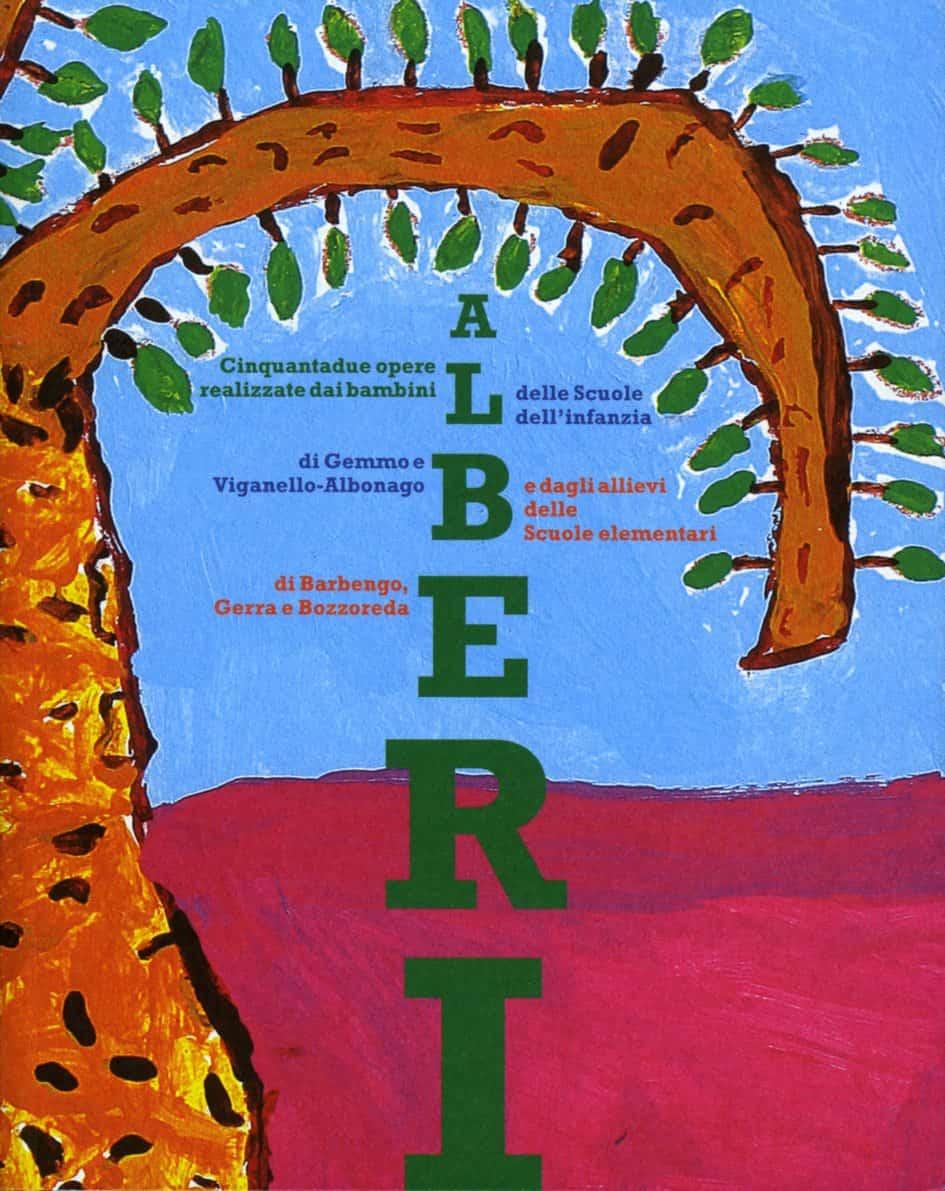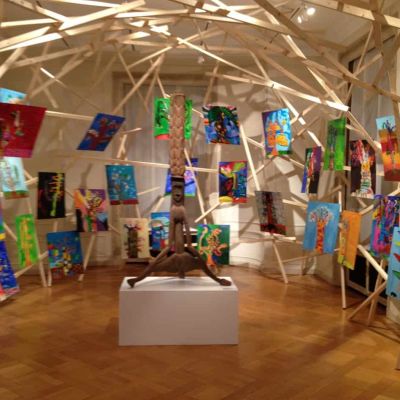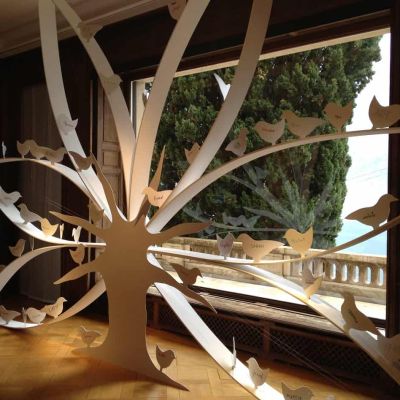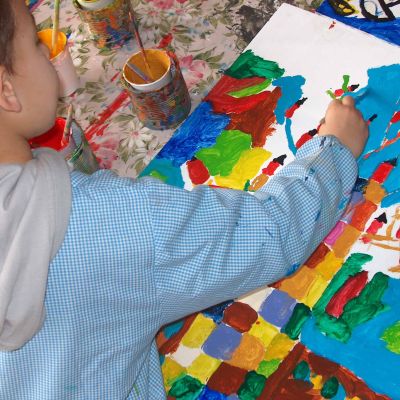HELENEUM – LUGANO
In the seventh edition of the Dèibambini cycle, children from two kindergarten sections (Viganello-Albonago and Gemmo) and three primary schools’ classes (Barbengo, Gerra, Bozzoreda) in Lugano, flanked by MUSEC teachers and educational staff, tackled the theme of the tree. Trees as a concrete expression of nature; as a projection of the values of symbolic universes; as silent and faithful companions of our lives. By playing intimately with the figure of the ‘Friendly Tree’, the children gradually familiarised themselves with a plant universe they felt to be ever closer to them, bringing out desires, needs, fears and feelings, which they transferred into the creation of a tree painting (primary school) and two large tree-sculptures laden with gifts (kindergarten). A plant universe, populated by beings that sink their roots into the earth, nourishing themselves effortlessly in the water-rich mineral environment, and grow in the warmth of the sun, rising year after year towards the sky. By comparison, the children realised that man, on the other hand, has no roots, and moves ceaselessly through the disorder of the world in search of an ever new dimension.

The forest of fantastic trees that fills the rooms on the ground floor of the Heleneum springs from the seeds of creativity and imagination. Climbing along the trunk and venturing into the foliage of one’s own interiority, each child has been educated to access his or her own imaginary space: a space within reach, like an exquisite fruit to be plucked and savoured, without haste. The temporary exhibition, in addition to the works created by the children, displays three works of ethnic art from MUSEC that have made them participate in the specificity and richness of the traditions of peoples who have entertained and, in some cases, continue to entertain deep and ancestral relations with trees. These include the sapundu, a ceremonial pole from Borneo depicting ‘he who has never forgotten that he is a tree’; the terminal section of large carved poles that crossed vertically through the ‘house of men’ (Sepik region); and the em hourglass drum, or tifa, of the Asmat (New Guinea), which identifies man with the Fundamental Tree. There are also pictures and drawings that contextualise the work and illustrate its educational path.
The Cantonal Museum of Natural History joined the project by contributing to the activities proposed to the classes. The themes of the creative and educational project were introduced and explored in depth in a seminar proposed to teachers with contributions from Giulia Bellentani, Céline Coderey (MUSEC scientific collaborators), Pia Giorgetti Franscini (resp. Cultural Mediation Cantonal Museum of Natural History), Paolo Maiullari (MUSEC researcher), Marco Musillo (MUSEC scientific collaborator), Valeria Nidola (expert in children’s literature) and Cesare Poppi (anthropologist).
The Dèibambini project was founded in 2005 as a platform for interaction between the museum and the school. In its first ten years, the project allowed children to engage with different topics, with the aim of increasing their awareness of their own potential and inner vision and strengthening their ability to interpret the world. Since 2022, the starting point has been the works of children from the past. The idea is to build a bridge between the children’s creativity of yesterday and today, through the in-depth exploration of the expressive contents that not only interconnect cultures, but have served as an extraordinary source for the renewal of artistic languages in the 20th century. A solid bridge, full of poetry, to connect the generations.




